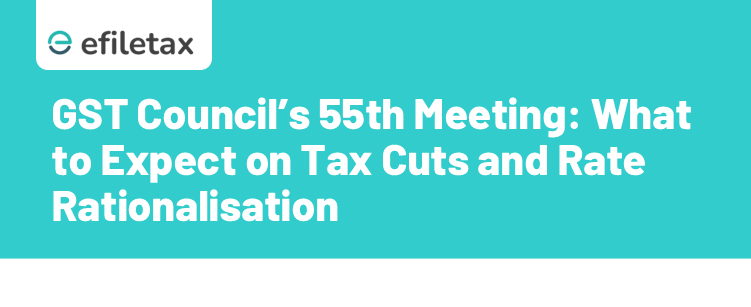
The GST Council’s 55th meeting, chaired by Finance Minister Nirmala Sitharaman, is set for December 21, 2024, in Jaisalmer, Rajasthan. Delayed due to state elections and the Winter Session of Parliament, this meeting will address key tax reforms, including rate rationalisation and insurance GST exemptions, aiming to balance revenue needs with consumer relief.
Key Focus Areas for the 55th GST Council Meeting
| Agenda | Proposed Changes |
|---|---|
| Rate Rationalisation | Slashing GST rates on essential goods from 12% to 5% while increasing taxes on luxury and sin goods. |
| Insurance GST Exemptions | Exempting GST on premiums for term life insurance and senior citizens’ health insurance. |
| Health Insurance GST Relief | Proposing GST exemptions on health policies with coverage up to ₹5 lakh; maintaining 18% GST on premiums for policies exceeding ₹5 lakh. |
| 2025-26 Budget Recommendations | State finance ministers to present their suggestions for the upcoming Union Budget 2025-26. |
| Average GST Rate Review | Addressing the declining average GST rate, which has dropped below the revenue-neutral rate of 15.3%. |
Rate Rationalisation: Key Proposals
A. Tax Cuts on Essential Goods
The Council plans to reduce GST rates on widely-used goods from 12% to 5%, providing relief to consumers.
B. Higher Levies on Luxury and Sin Goods
To balance revenue losses, the Council may increase GST on luxury items and sin goods, which currently attract a 28% tax plus cess.
C. Impact of Four-Tier GST Slabs
Currently, the GST structure has slabs at 5%, 12%, 18%, and 28%, with essential goods taxed at the lowest rates and luxury items at the highest. The GoM aims to simplify this system while safeguarding revenues for states.
GST Exemptions on Insurance
A. Proposals for Term and Health Insurance
- Term Insurance: GST exemptions for premiums paid for term life insurance policies.
- Senior Citizens’ Health Insurance: GST exemptions on health policies for senior citizens to reduce financial burdens on aging populations.
- Health Insurance (Up to ₹5 Lakh): Proposing exemptions for individuals paying premiums on policies with coverage up to ₹5 lakh.
- Health Insurance (Above ₹5 Lakh): Maintaining the 18% GST on high-value health policies.
B. Broader Impact
- Promotes affordability of insurance products.
- Increases penetration of term and health insurance among low-income groups and senior citizens.
Why Rationalisation is Critical
- Revenue Challenges: The current GST rate structure has led to the average GST rate falling below the revenue-neutral rate of 15.3%. Rationalisation aims to rectify this while ensuring essential goods remain affordable.
- Simplification: A streamlined structure with fewer slabs will ease compliance and reduce disputes.
- State Concerns: Non-NDA states, like Kerala and West Bengal, oppose drastic changes due to revenue loss concerns, especially with the cessation of GST compensation from the Centre in 2022.
Past Decisions on GST Reforms
The Council’s recent reforms reflect a commitment to consumer welfare and revenue efficiency. For instance, the Group of Ministers (GoM) on Insurance GST proposed exemptions for senior citizens’ health policies and low-value health insurance, marking a significant step towards inclusive tax reforms.
Looking Ahead
The 55th GST Council meeting marks a pivotal moment for India’s tax framework. While tax cuts on essential goods and insurance reforms signal a consumer-friendly approach, balancing these changes with revenue sustainability remains challenging.
Key Takeaways:
- Expect relief for consumers on essential goods and insurance premiums.
- Luxury and sin goods will face higher taxes to compensate for revenue shortfalls.
- Rationalisation efforts will likely simplify compliance and enhance transparency.
Conclusion: The decisions made in Jaisalmer will shape the 2025-26 Budget and provide a roadmap for balancing consumer needs with fiscal stability.
“Simplifying taxes today paves the way for a stronger economy tomorrow.”